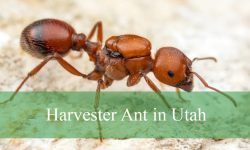Ground hornets in Pennsylvania—often mistaken for several similar ground-nesting wasps—are some of the most misunderstood stinging insects in the state. Their loud buzzing, aggressive appearance, and hidden underground nests can spark fear among homeowners, hikers, and outdoor workers. Yet behind the intimidating reputation lies a surprisingly complex insect with specialized behaviors, territorial instincts, and a venom-delivery system that works very differently from that of bees. One question people repeatedly ask is whether these ground hornets can sting more than once and inject venom multiple times.
Pennsylvania’s diverse ecosystems—from Appalachian hardwood forests to suburban backyards—support several species commonly labeled “ground hornets,” including Eastern cicada killers, yellowjackets, and bald-faced hornets that sometimes nest in soil cavities. While these insects vary in size, coloration, and behavior, their stingers share one key advantage: they do not detach after a sting. This biological difference allows them to inject venom repeatedly if threatened.
This article explores the truth behind this question using scientific detail, examining how ground hornets sting, how their venom functions, why they defend their nests so fiercely, and what their role is within Pennsylvania’s ecosystems.
Understanding Pennsylvania’s So-Called Ground Hornets

What People Call “Ground Hornets” Are Often Different Species
In Pennsylvania, several insects get lumped into the term “ground hornet,” even though the name technically isn’t accurate. The most commonly encountered include:
-
Eastern yellowjackets (the true aggressive ground-nesting stingers)
-
Cicada killer wasps (large but mostly non-aggressive, often mistaken for hornets)
-
Bald-faced hornets (occasionally use soil cavities)
The yellowjacket is the species responsible for most painful stings and multiple-sting events. Cicada killers rarely sting, and when they do, they typically sting only when handled directly.
This distinction is essential for understanding venom delivery.
Their Nesting Habits Influence Human Encounters
Ground hornets select hidden, protected soil cavities—abandoned rodent burrows, dry slopes, and shaded areas beneath shrubs. These nests can hold dozens to hundreds of individuals.
When nests are disturbed, hornets respond defensively, leading to multiple stings in a short time.
Because humans often unknowingly walk near entrances, accidental encounters are common.
Their Colonies Reach Peak Activity in Late Summer
Pennsylvania’s warm summers allow ground hornet colonies to expand rapidly. By August and September, nests are at full strength, with intense foraging activity and high sensitivity to movement near the entrance.
Most stinging incidents occur during this period.
Their seasonal rhythm shapes how often humans are stung.
Can Pennsylvania Ground Hornets Sting Multiple Times?
Yes—Ground Hornets Can Inject Venom Repeatedly
Unlike honeybees, ground hornets have smooth stingers that do not break off. This means each hornet can sting multiple times in quick succession, injecting venom each time.
This ability makes them more dangerous during defensive swarms.
Their stinger’s design reflects evolutionary adaptation to aggressive nest defense.
The Stinger Functions Like a Hypodermic Needle
Ground hornet stingers are hollow tubes connected to venom sacs. When the hornet contracts its abdominal muscles, venom is pumped through the stinger directly into the target.
Hornets can control the amount of venom delivered, injecting small or large doses depending on the perceived threat.
This precision allows highly efficient use of venom.
Multiple Hornets Can Sting at Once
Ground hornets are social insects. When one hornet stings, it releases alarm pheromones that alert nestmates. Within seconds, multiple hornets can take flight and join the defense.
This coordinated attack results in several individuals stinging repeatedly.
Their social communication intensifies the threat level dramatically.
The Biology Behind Repeated Venom Injection
Their Stingers Lack Barbs
Honeybees possess barbed stingers that lodge into skin and rip from the bee’s abdomen, killing the bee after one sting. Ground hornets, however, have smooth stingers built for multiple insertions.
This smooth design allows them to withdraw and sting again instantly.
The stinger’s shape mirrors that of many predatory wasps.
Venom Sacs Refill Quickly
Ground hornets store venom in paired sacs. After delivering venom, these sacs can refill over time as the insect produces more venom.
While a hornet cannot deliver unlimited venom, it can sting several times before venom supply dwindles.
This replenishment supports long-term colony defense.
Their Sting Mechanism Is Controlled by Muscle Contractions
Each sting involves a series of muscle-driven motions that pump venom. Because the mechanism is mechanical, not dependent on specialized structures that break, it repeats without damage.
This biological efficiency makes ground hornets formidable defenders.
Their stinger serves as a durable, multi-use tool.
Why Ground Hornets in Pennsylvania Sting So Aggressively
Nest Defense Is Their Primary Motivation
Ground hornets rarely sting during foraging. Instead, aggressive behavior appears when the nest is threatened. Vibrations, footsteps, lawn equipment, or animals passing near entrances trigger immediate defensive responses.
The colony’s survival relies on rapid defense.
This explains why many stings occur near ground-level nests.
Alarm Pheromones Intensify Their Behavior
When one hornet stings, it releases chemical signals that:
-
Alert other hornets
-
Stimulate heightened aggression
-
Direct attackers toward the same target
The pheromones create coordinated swarm responses in seconds.
This chemical communication increases sting severity dramatically.
Late-Summer Colonies Are Highly Sensitive
Large worker populations and abundant brood (developing larvae) make colonies more defensive. Hornets perceive any approach as a threat to colony survival.
Peak defensiveness occurs in August and early September.
Seasonal biology shapes sting frequency.
How Ground Hornet Venom Works
The Venom Contains Potent Pain-Inducing Compounds
Ground hornet venom includes acetylcholine, histamines, peptides, and enzymes that trigger immediate burning pain.
The venom can cause:
-
Sharp stinging sensation
-
Swelling
-
Redness
-
Localized heat
-
Itching
Pain peaks quickly due to neurotransmitter activity.
The biochemical intensity makes them feared insects.
Enzymes Amplify Tissue Reactions
Phospholipases and proteases break down cell membranes, causing inflammation and, in severe cases, small areas of tissue damage.
These enzymes increase swelling and prolong the sting’s effects.
Enzymatic breakdown also enhances venom penetration.
Allergic Reactions Are Possible
Some individuals develop systemic reactions:
-
Hives
-
Breathing difficulty
-
Rapid swelling
-
Dizziness
Multiple stings heighten the risk of medical emergencies.
Ground hornet venom is potent enough to require caution, especially for those with allergies.
How Ground Hornets Coordinate Their Attacks in Pennsylvania
Visual Cues Help Target Movement
Hornets detect motion quickly. Vibrations near the entrance signal a threat, causing multiple workers to exit the nest and investigate.
Any sudden movement can trigger stinging.
Their vision supports rapid targeting.
Chemical Signals Direct the Colony
Alarm pheromones guide hornets toward a common target, increasing stings in one location rather than dispersing attacks randomly.
This efficiency makes attacks more dangerous than solitary stings.
Chemical communication underlies their aggressive success.
Sound and Vibration Influence Behavior
Lawnmowers, hedge trimmers, and vehicles passing over soil can trigger hornets to erupt from their nests.
They interpret loud, low-frequency vibration as a predator digging into the nest.
This is why accidental stings often involve yardwork.
Human–Hornet Interactions in Pennsylvania
Most Stings Occur When Nests Are Hidden
Because ground hornets build nests below the surface, people often disturb them accidentally. Tall grass, leaf litter, and shaded soil conceal entrances effectively.
A single step may provoke multiple hornets.
Awareness of nesting areas reduces risk.
Pets Are Frequently Stung
Dogs exploring yards or wooded areas may disturb nests and experience multiple stings on the face or paws.
Because hornets can sting repeatedly, pets often suffer dozens of stings before escaping.
Veterinary care may be required in severe cases.
Outdoor Workers Face Higher Exposure
Landscapers, gardeners, surveyors, and park workers encounter hornets more often. Disturbing ground cavities exposes them to swarm responses.
Protective clothing and nest awareness are essential.
Their occupational risk is tied to habitat overlap.
Identifying Ground Hornet Nests in Pennsylvania
Nests Appear as Small Holes With Loose Soil
Entrance holes are typically ½ to 1 inch wide, surrounded by displaced soil or small pellets indicating recent excavation.
Activity is highest on warm, sunny afternoons.
Hornets may be seen entering and exiting rapidly.
High Traffic Around an Opening Indicates a Nest
Persistent, directional flight shows the nest entrance clearly. Workers return with food or exit to defend the colony.
This observation helps identify dangerous areas.
Avoiding marked entrances reduces sting incidents.
Hidden Nests Thrive in Yards and Forests
Ground hornets choose:
-
Undisturbed soil
-
Edges of woodlands
-
Beneath shrubs
-
Abandoned rodent burrows
-
Mulched beds
Their preference for concealed tunnels increases the risk of accidental encounters.
Homeowners should examine ground activity during summer.
How to Avoid Multiple Stings
Maintain Distance From Known Nests
Once a nest is identified, elimination or professional removal is recommended in high-traffic areas. Until then, avoiding the area is best.
Direct disturbance triggers multiple hornets instantly.
Distance reduces risk dramatically.
Wear Protective Clothing
Long pants, sleeves, work gloves, and closed-toe shoes limit sting access. Ground hornets aim for exposed skin.
Clothing creates a physical barrier.
Yard Maintenance Requires Caution
Before mowing or trimming, inspect soil for hornet activity. Avoid passing equipment directly over nest entrances.
This precaution prevents swarm reactions.
Ground vibrations are primary attack triggers.
FAQs About Pennsylvania Ground Hornets
Can ground hornets sting repeatedly?
Yes. Their stingers do not detach, allowing multiple venom injections.
Are cicada killers dangerous?
Not typically. They rarely sting and are far less aggressive than yellowjackets.
Why are ground hornet nests hard to find?
They build hidden soil entrances that blend into natural ground cover.
What should I do if stung multiple times?
Clean the area, apply ice, take antihistamines, and seek medical help for severe reactions.
Do hornets chase people?
They pursue threats near their nests but do not chase long distances.
How many hornets live in one nest?
Yellowjacket nests can contain hundreds by late summer.
Are ground hornets beneficial?
Yes. They control pest insects and contribute to ecosystem balance.
Do hornets die after stinging?
No. They survive and can sting repeatedly.
Conclusion
Pennsylvania ground hornets can inject venom multiple times due to their smooth, non-barbed stingers and highly efficient venom delivery systems. Their defensive behaviors, alarm pheromones, territorial instincts, and large late-summer colonies allow them to swarm quickly and deliver repeated stings when disturbed. Although painful and potentially dangerous, these insects play important ecological roles by controlling pest populations and recycling organic material.
Understanding their biology, behavior, and nesting habits helps reduce accidental encounters and promotes safe coexistence with one of Pennsylvania’s most powerful and misunderstood insects.






